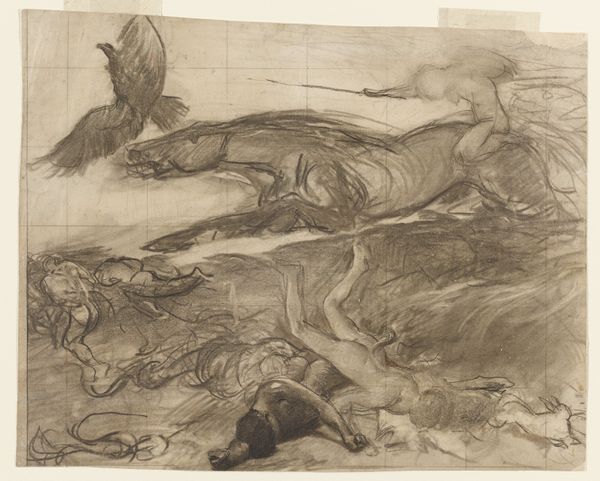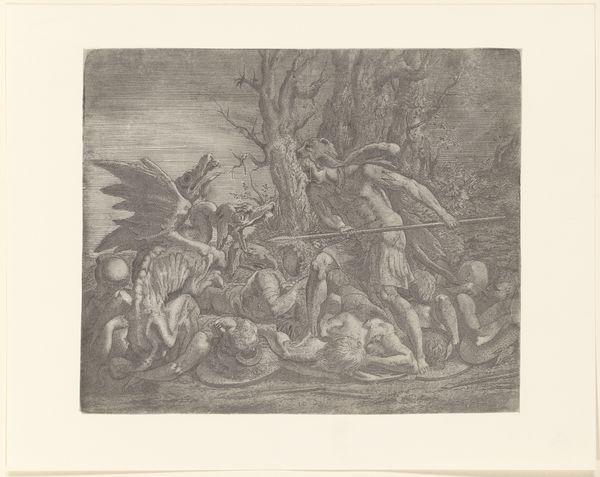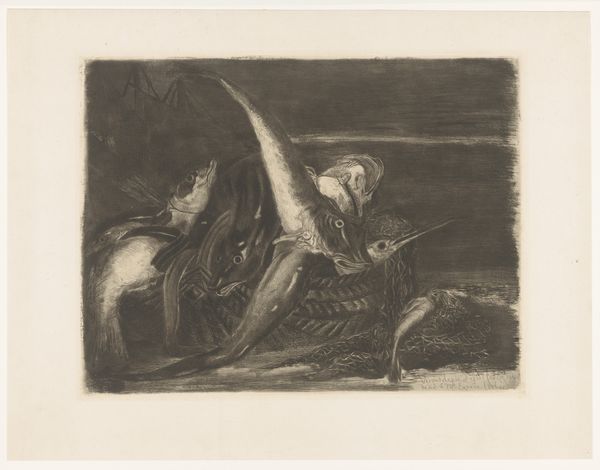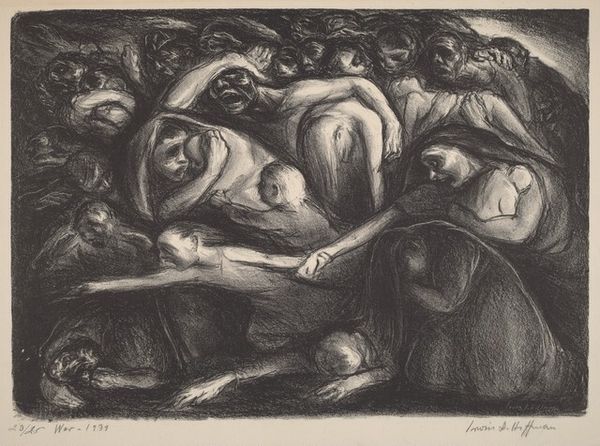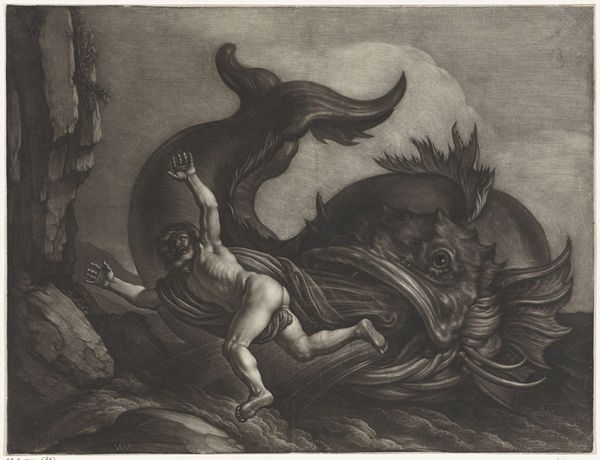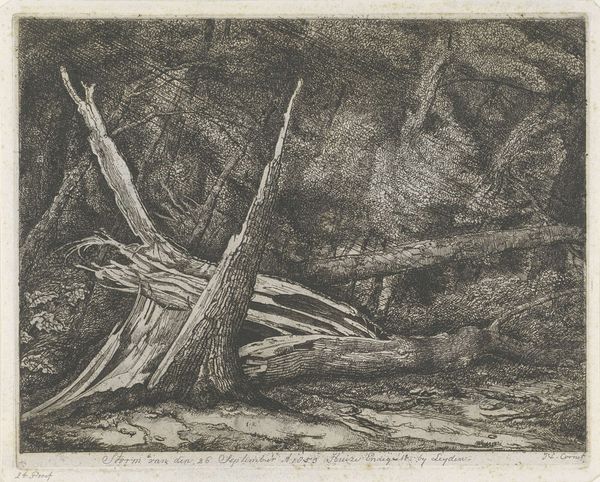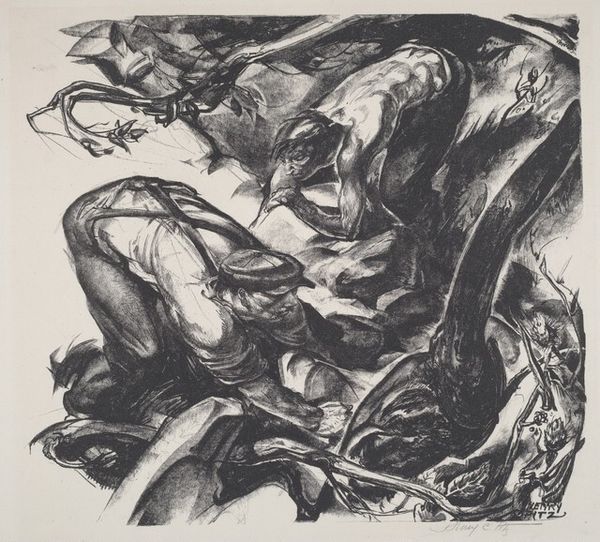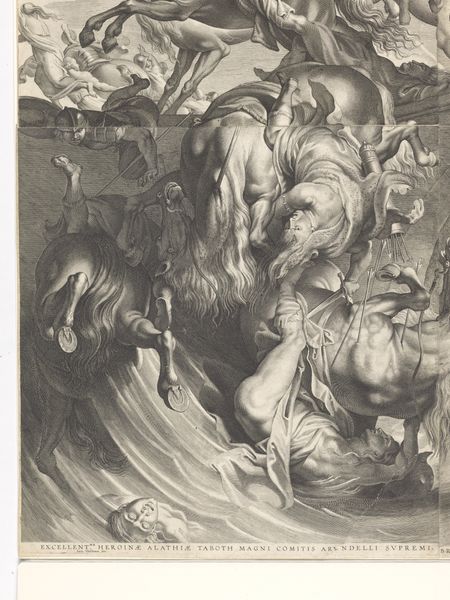
The Triumph of Death: After the Battle (Le triomphe de la mort: Apres le combat)
0:00
0:00
print, etching
# print
#
etching
#
landscape
#
figuration
#
history-painting
#
realism
Copyright: National Gallery of Art: CC0 1.0
Curator: This stark image is titled, "The Triumph of Death: After the Battle." An etching by Alphonse Legros. Look closely and you'll notice that even in the aftermath, death asserts its power. Editor: Absolutely, it's a harrowing depiction. The immediate feeling I get is one of utter desolation; the sheer number of bodies overwhelms. You're struck by the intimacy of death here –how ordinary it is, how randomly it strikes. Curator: It's potent imagery, certainly reflecting on history-painting traditions. There’s an eerie theatricality, amplified by Legros' expert command of etching techniques. This was made to be reproduced and distributed; death democratized through printmaking, perhaps? Editor: I think your description gets at an important aspect of Legros’ work: that it’s overtly political. Beyond death's universal reach, there’s something more specific, more intentional happening here. What are the class and power dynamics within this particular historical conflict? Whose deaths are valorized, and whose are rendered invisible? I am always interested in locating these untold stories. Curator: Very true. Legros worked within the Realist movement, one that aimed to represent subjects without idealism or romanticism, right? So he must have consciously chosen to depict the blunt reality of combat. Editor: Exactly. The way the print is executed emphasizes this – it’s all sharp lines and deep shadows. It’s less about aestheticizing death than it is about forcing you to confront it. Legros forces the viewer into an intimate proximity with trauma that's rooted in historical circumstance. It is imperative that one is challenged into rethinking the implications. Curator: Legros made other works related to death; there’s an overarching preoccupation across his work. "Triumph of Death" clearly grapples with the universal experience of death, but as you mentioned, contextualizing is paramount, helping one to not become blinded by art history. Editor: Right, examining the context—both immediate and overarching. Understanding those complex sociopolitical narratives that inform artistic expressions, ensuring we engage with more nuanced perspective that appreciate art, culture, and our human experience.
Comments
No comments
Be the first to comment and join the conversation on the ultimate creative platform.

